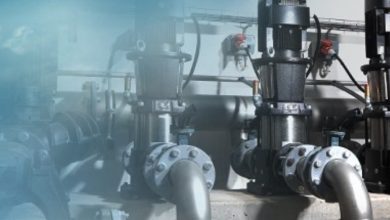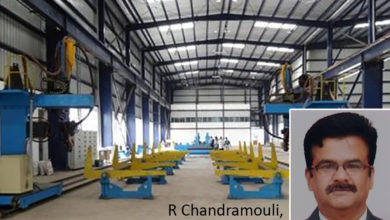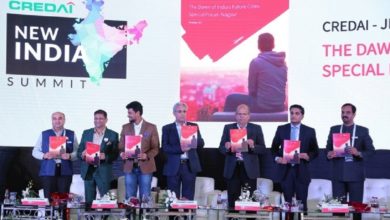Making Constructibility Practical
Rajan Aiyer, Managing Director, Trimble India and SAARC
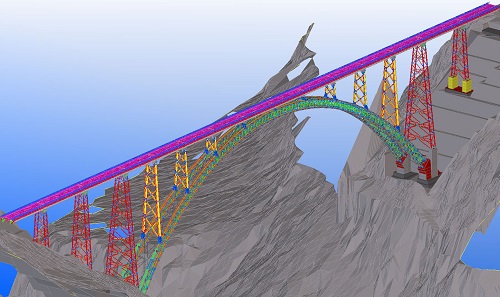
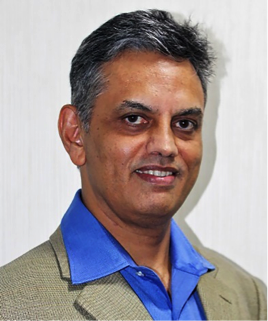 Share your views on the roadmap or the outline, which followed in the recent year of 2018-2019 period, for the infrastructure and construction sector.
Share your views on the roadmap or the outline, which followed in the recent year of 2018-2019 period, for the infrastructure and construction sector.
Construction sector is one of the largest contributors to the global economy. In India, it has over 9% of share in the GDP and is also the second largest employer after the agriculture sector. Favorable economic conditions and significant investments in transport infrastructure, energy, and housing projects have led to a healthy growth momentum in 2018. The residential construction segment singularly is anticipated to account for over 30% of the industry’s total size by 2023. Further, 2018-2019 budget witnessed an increase in the allocation for infrastructure development by 20.9%, from INR 4.9 trillion (US$75.9 billion) in 2017-2018, to INR 6 trillion (US$89.2 billion) 1 , and the construction sector invited FDI in 2017-18 worth $1,281 million.
Overall, India is moving in the right direction in the infrastructure and construction sector with mega projects such as Housing for All and Industrial Corridor already in the process. India is also projected to be the third largest construction market globally by 2030, with the sector’s contribution to GDP is foreseen to touch 15% by 2030 2 . In order to fully capitalize on this massive opportunity and to grow profitably, it is critical for the Indian construction industry to transform itself, increase its productivity and improve project management. We believe technology solutions and digital workflows will be the catalyst for this industry- wide transformation.
Tell us about your recent recognized projects (e.g. your core execution strength and expertise in providing best solutions)
Trimble’s technology has been widely used to build complex structures throughout the world including India. Here, among the number of ongoing projects, the most ambitious is the Chenab Bridge which is part of the new Baramulla—Srinagar—Udhampur railway line in northern India, crossing the river Chenab in the Kashmir valley. It is one of the tallest and longest-spanning railway bridges of its kind in the world and spans the river at 359 meters (1,178 feet) above the surface and cover a length of 1,315 meters. Construction of the Chenab Bridge in a harsh and mountainous terrain required special attention to be given to schedule compliance, technical excellence, and logistical management. Apart from the geographical challenges, the project contained approximately 25,000 tons of steel detailing; the management of which was a demanding task.
Recognizing the enormous complexity of the project, Tekla Structures was put to use from the beginning, which has greatly benefitted the project; all structures, temporary cables and related anchoring towers have been designed using Constructible Building Information Modeling (BIM). All structures, temporary cables and related anchoring towers were modelled in Tekla Structures. It also facilitated the organization of the plate material for better logistics in the difficult terrain. Besides, Constructible BIM has also been applied on site for erection sequence planning, geometry and quality control, and the workshop drawings and CNC data are sourced directly from the model. The contractor employed the models in close co-operation with the designer, and the third-party inspector made use of it in the reviewing process.
The 3D visual models also made it easier to get approvals. The project efficiency also increased as the 3D model generated had reports for material quantity take-off, assembly dimensions and center of gravity for lifting and transportation. The high level of development (LOD) and accuracy of the model allowed it to be used for fabrication in the temporary workshops on site. In conclusion, the Chenab Bridge project has clearly demonstrated that Constructible BIM can make even a highly intricate project less complex to
design, plan and construct.
Share with us your promising management ideas and driving strategies which you are using in your projects?
As the world’s leading construction Technology Company, we have developed a unique lifecycle approach to ensure our customers are able to realize the benefits of Constructible BIM and automate construction effectively and entirely. The core of Trimble’s constructible process is best explained through the three Cs: all phases and trades are Connected, all models and workflows are Content-enabled and finally, Constructible models drive smarter workflows. This allows construction professionals to achieve
unprecedented efficiency with information-rich, as-built models. They can identify possible problems with construction even before they have started work using real materials.
Our industry-leading flagship solution for construction industry, Tekla Structures, encapsulates this approach by ensuring that all the stakeholders from architects to engineers to fabricators work seamlessly with each other. 3D model created using this software are truly constructible design, detailed and contains accurate information from conceptual planning to fabrication and construction on site. The consistent information and better collaboration bring high quality and profitable projects thus enables various stakeholder create, combine, manage and distribute accurate multi-material models.
Today, more and more industry players around the world are recognizing the value of collaborative approach as the key to improving and managing overall project effectiveness. With constructive data and true collaboration every person, phase, and process can work together seamlessly – optimizing the entire plan, concept, build, and operate lifecycle.
How would you predict the year 2019, along with sharing your business plans for the next 5 years, as the new government is just going to be elected, in order to adapt to the latest policies and norms and remaining competitive in the industry?
As formalized by PM Narendra Modi, we are in the Construction- Technology Year and being the global leader in construction technology, our goal is to play a key role in the transformation of India’s construction industry as it evolves to compete more effectively and profitably; execute iconic projects and create more value for all key stakeholders. India has already began its digitalization journey and further advancement by the next government like mandating BIM across construction in the country, will definitely be a remarkable step towards technology inclusion. To begin with, government can take head start in this step by ensuring that BIM is mandated in the construction of all government buildings. With this we are certain that in the next five years, digital transformation of the Indian construction industry will only accelerate as it readies itself for a US$ 1 trillion market opportunity by 2025.
Is there is something you would like to share with your audience at large, as in discussing your trade principals and economic ambitions for the near future?
Strategically, India is one of the most important market and our offerings include class-leading hardware and software solutions to India’s engineering and construction industry that makes construction quicker, safer and cost-efficient. As mentioned earlier, Trimble is the only player in the industry to bring Constructibility to BIM through our product portfolio, with Tekla Structures being the flagship product. Over the past few years, our solutions have played significant role in landmark infrastructure construction projects in India including Chenab Railway Bridge, Chennai Metro, and Chennai Airport expansion amongst others. Our vision is to move the industry forward in its growth journey by making constructibility a practical, everyday issue-solver, as it is crucial for the long due digital transformation of construction industry. As more and more industry players adopt construction software, the industry will become more efficient, more productive and more connected. From housing and bridges to factories and skyscrapers, Trimble will ensure that constructibility continues to be a practical, everyday issue solver for the industry, which will hasten up tech adoption and bring manifold benefits for the industry.



